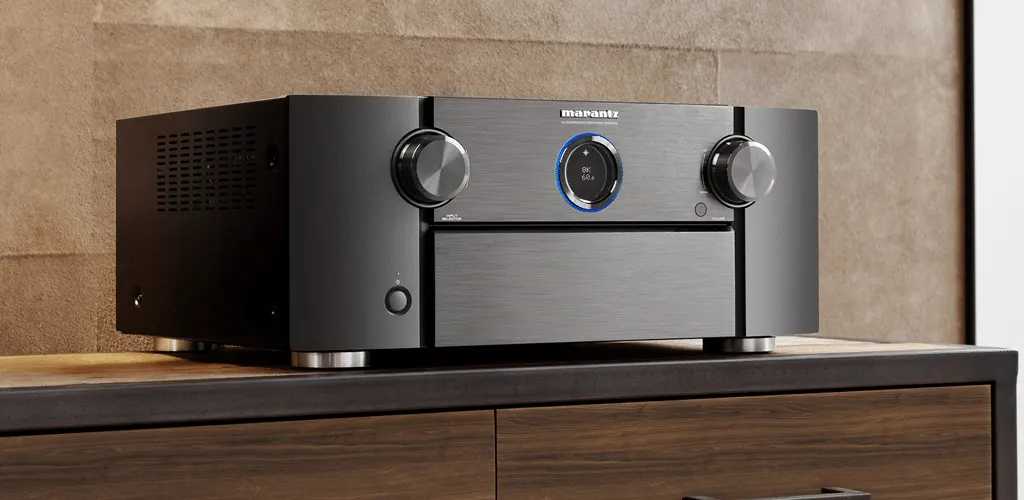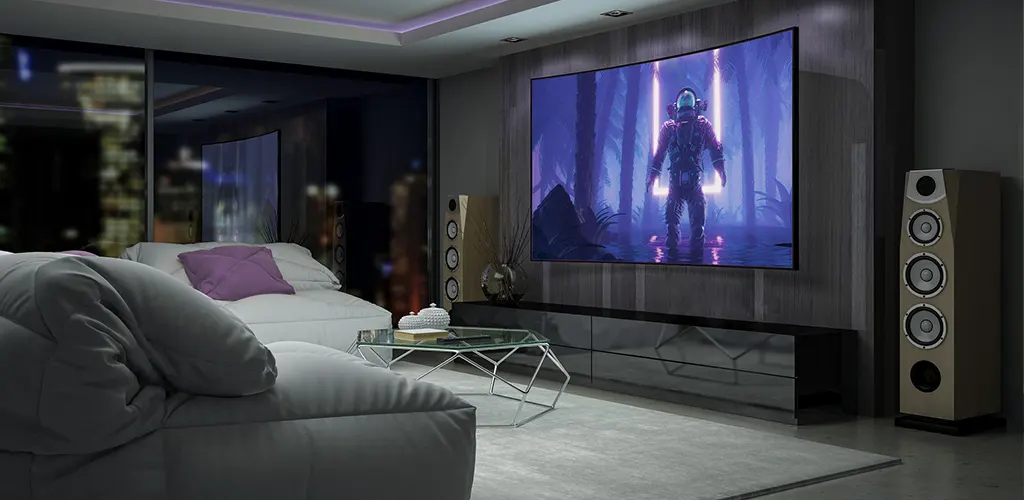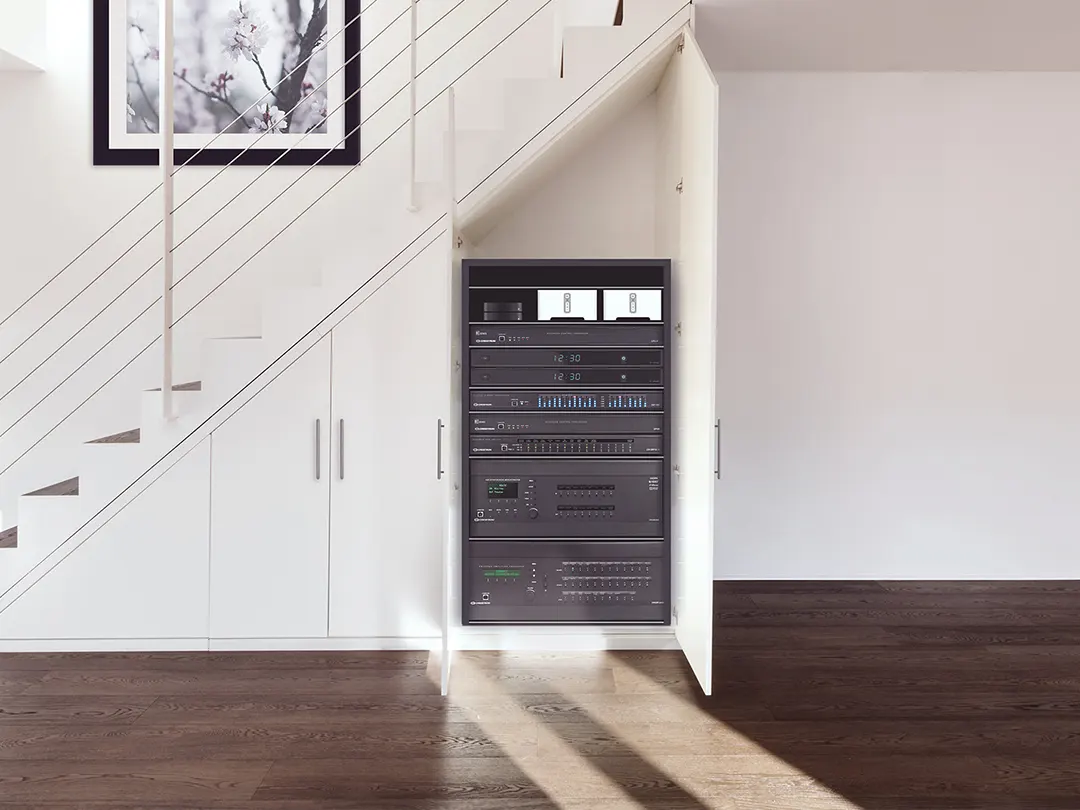The powerhouse of your home theater experience is the AV receiver. It connects the sources, speakers, and on-screen visuals to create the magic of a dramatic fairytale or the rush of a legendary battle. However, AV receivers and their variety of sockets and acronyms can be intimidating for first-time buyers. Xssentials is here to walk you through the process of choosing, setting up, and calibrating the perfect AV receiver for your home theater.
Select your AV Receiver
There are three main questions you should answer before selecting an AV receiver: how many speakers do you have, how many HDMI inputs do you need, and what is your budget? You’ve already decided to invest in a surround-sound system for your home, but will you opt for a basic 5.1 channel or go all-out with 11 channels? If you only have space for five speakers and a subwoofer, considered the minimum for a surround system, then look no further than a five-channel AV receiver. However, if you’re considering expanding to some additional back channels one day, your future self will thank you for investing in a nine or 11-channel amplifier today. Next, you want to ensure you have plenty of HDMI inputs for all of the sources you own, including gaming consoles and a Blu-ray player, and that they can support the newest 8K and HDR specifications. Several amps come equipped with legacy analog connections for older tech like VHS players if you’re feeling nostalgic. Lastly, consider your budget. AV receivers that are around $450 or lower grant you basic 5.1, some HDMI inputs, and no internet. If you want all the cutting-edge AV features such as Wi-Fi, Dolby Atmos, DTS:X, 4K HDR passthrough, music streaming features, and multiple HDMI inputs, then you’ll need a receiver around $800. Anything higher than $1000 will grant you everything above but with more fine-tuned power and features. If you’re feeling unsure about how much to spend, consider how much you spent on your speaker package and cut that price in half to estimate the higher range of a potential AV receiver.

Connect all the Elements
As long as you take your time properly setting up your receiver, you’ll never have to deal with the overwhelming number of connections again. First, turn it off when plugging in your speakers, subwoofers, and sources to prevent short circuits to the system. Most receivers have their connections clearly labeled, while others color-code speaker terminals. If you’re playing 4K HDR content, plug your 4K Blu-ray player into the HDMI input labeled “HDCP2.2.” You’ll notice each input has a particular source: Blu-Ray, DVD, CD, Game, CBL/SAT, etc, because the manufacturer has carefully optimized each input for best performance. If you can, use a wired ethernet connection that’s more reliable than Wi-Fi, and finally, the USB port in the front can play media files off a USB stick, or charge your smartphone if the amp allows it!
Calibrate the Receiver
The majority of AV receivers come with a set-up mic for an auto-calibration that measures your speakers and your room, sets the speakers’ distances and levels, and for fancier calibration systems, will optimize the speaker performance to pair with its surroundings. We suggest you run the auto-calibration immediately after you plug everything in so you can begin to enjoy your new home cinema sooner with an ideal sound. Once the mic is plugged in, on-screen instructions will guide you through the process, which may take a few seconds up to five minutes to record appropriate measurements. Trust your hearing: if the audio sounds wrong, it probably is, so delve into the manual speaker settings to double-check and adjust the distances and levels. If you decide to add or rearrange your speakers or furniture, you’ll need to run the calibration again, so hold onto that set-up mic. Finally, we recommend you go into the settings and manually turn off dynamic range compression (DRC), so your neighbors aren’t disturbed by any huge cinematic explosions from your late-night movie viewing.
Explore Surround Sound Modes and DSPs
You’re almost ready to begin watching a great film, but there are a few more options worth exploring, including surround sound modes and DSPs (digital sound processing). DSPs can differ between Dolby or DTS modes to particular Sci-Fi/Drama/Adventure/Game settings that boost specific aspects of sound. There are even effects that simulate cathedral acoustics, concert hall ambiance, or a jazz club’s sound that can be fun to experiment with. However, we suggest placing minimal filters on the sound signal. We suggest the ‘straight,’ ‘direct,’ or ‘pure direct’ modes since they produce the cleanest signal from source to output. Finally, if you think you’ll be watching or listening to a variety of content, including sports, music, movies, or video games through your receiver, set up shortcuts with customized settings for each kind of content so you won’t have to constantly alter your sound settings.

Sit Back and Relax
It’s finally time to press play! When testing an AV receiver, let it “run in” (keep playing) for a day or two to warm it up and sound its best before any critical listening. You’ll find the more you use your amp, the better it will sound. It’s time to make some popcorn, grab your favorite movie, and enjoy your new home theater system. If you’re ready to invest in a full system or have questions about your AV receiver options, call our team at Xssentials today, and we’ll help you get started.



